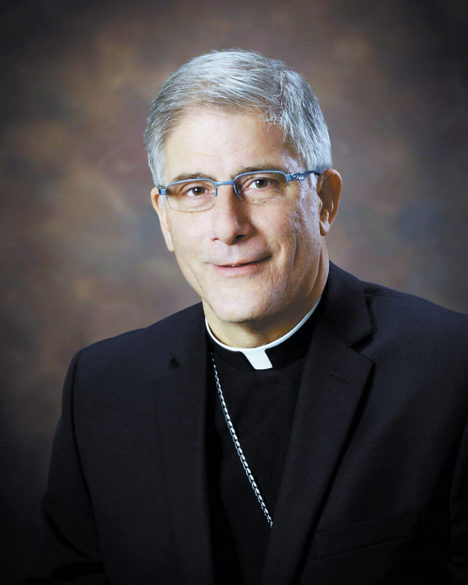By Bishop Joseph R. Kopacz, D.D.
On Sept. 30, 2019, on the feast of St. Jerome, Pope Francis promulgated his Apostolic Letter, Aperuit Illis designating the third Sunday in January as Sunday of the Word of God. This blessed designation, a praiseworthy compliment to Corpus Christi, the Solemnity of the Body and Blood of the Lord, will over time, serve to integrate and enliven the Sacred Scriptures into the liturgical life of the church, and the daily life of Catholics. St. Jerome dedicated his life to the translation of the entire bible into Latin from the Hebrew of the Old Testament and the Greek of the New Testament.
Pope Francis in his Apostolic Letter yearns for us to “to appreciate the inexhaustible riches contained in the constant dialogue with and among the Word of God, the risen Lord, and his people.”

The Bible is a living word, fashioned by the Holy Spirit over two thousand years, and proclaimed and preached upon, studied and taught over the next two thousand years in what we as Catholics accept as tradition. It is the living Word of God, the heart and soul of the church’s life and ministry, that continues to form the Lord’s body, the church. “The heavens and the earth will pass away, but my Word will never pass away.” (Luke 21:33)
The sacred scriptures that the Catholic Church throughout the world proclaimed last weekend wonderfully portrayed the dialogue that is ever active between the risen Lord and his body, through the living Word of God.
In Sunday’s Gospel, in the synagogue in Nazareth, the Lord rolled up the scroll from the prophet Isaiah after announcing liberation, freedom, sight to the blind, and a year of grace and favor proclaiming: “Today this Scripture passage is fulfilled in your hearing.” (Luke 4:21)
Why? Because Jesus is the Good News who comes with salvation for all who hear his voice and become his disciples.
All Scripture is inspired by God (2Tim 3:16) and intended to lead us to Jesus Christ, but without a doubt, the most important words in all of the Bible are the ipsissima verba of Jesus, his very own words.
His inaugural address in the synagogue in Nazareth, where he was a member all of his life, is among some of his most inspiring and hopeful. In the first reading last weekend from the Book of Nehemiah, Ezra, the priest and scribe, spoke to the Israelites who gathered to hear the Word of God after years in exile. “For this day is holy to Our Lord; and do not be grieved, for the joy of the Lord is your strength.” (Nehemiah 8:10) We can take these encouraging words to heart each time we gather in faith.
Aperuit Illis is the title of Pope Francis’ Apostolic Letter that inaugurated “Sunday of the Word of God. Literally, it means “he opened for them” and it is taken from the resurrection appearance on the road to Emmaus.
This year, as we strive to deepen our love for the Lord in the Year of the Eucharist, let us turn to the story of Emmaus when the risen Lord walked with two of his forlorn disciples, burning his words into their hearts, opening their minds to understand the scriptures that referred to Him, and then their eyes to recognize Him in the breaking of the bread.
Finally, the two disciples dashed from the place they were staying to announce the Good News. This scripture passage is the paradigm for the Mass when we are fed from the table of the Word of God and the table of the Eucharist, and then at the conclusion of our worship, we are sent to announce the Gospel with our lives.
Regarding the Word of God in other settings apart from Mass, we believe that God is always inviting us to grow in our faith and in our love for the scriptures. In the Book of Revelation, we have the beloved passage that has become a centerpiece for God’s initiative. “Behold, I am standing at the door knocking. If one of you hears my voice and opens the door, I will enter and we will dine together.” (Revelations 3:20)
Pope Francis encourages us, “if we hear his voice and open the doors of our minds and hearts, then he will enter our lives and remain with us.” May we become at home with the bible in whatever way is possible in our daily lives.
In season and out of season, in good times and in bad, may the joy of the Lord be our strength. With our Blessed Mother and all the saints, may we hear the Word of God and put it into practice. May the proclamation of God’s Word on every weekend enlighten our minds and hearts to know that the Lord is always near.

